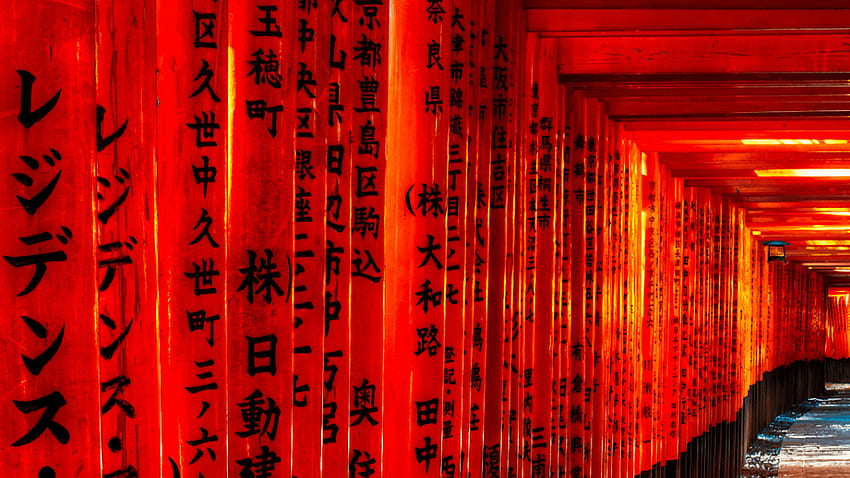
Whispers of the Ancients: Exploring Japan’s Enigmatic Shinto Shrines

Nestled within the lush landscapes of Japan, Shinto shrines stand as silent witnesses to the rich tapestry of the nation’s spiritual heritage. These sacred sites, steeped in history and imbued with a sense of tranquility, invite visitors to explore the unique relationship between the divine and the natural world. From the grandeur of the iconic torii gates to the serene gardens that surround them, Shinto shrines in Japan offer a glimpse into the ancient beliefs and traditions that have shaped the Japanese cultural identity for centuries.
As you wander through the hallowed grounds of these shrines, a profound sense of peace envelops you, and the whispers of the ancients seem to echo in the rustling leaves and gentle streams. Each shrine tells a story, whether through its architectural beauty, the rituals performed within its grounds, or the festivals that bring communities together in celebration. Discovering these mystical places provides not only a spiritual journey but also a deeper understanding of Japan’s soul, connecting the past with the present in a harmonious embrace.
The Origins of Shinto Shrines
Shinto shrines in Japan have roots that trace back to ancient times, evolving from early animistic practices that honored natural elements and spirits. In prehistoric Japan, communities worshipped kami, or divine spirits, believed to inhabit natural phenomena such as mountains, rivers, and trees. These spiritual beliefs laid the foundation for what would eventually become the formalized structure of Shinto, where shrines would serve as sacred spaces to honor the kami and facilitate communication between the divine and the human realms.
The establishment of Shinto shrines became more pronounced during the Asuka period, around the 6th century, as Buddhist influences began to mingle with indigenous beliefs. The earliest recorded shrines were simple structures that evolved in complexity over time, reflecting the growing organization of religious practice and the increasing significance of shrines. They transitioned from rudimentary altars in the wilderness to more refined and ornate buildings, often strategically located in areas deemed spiritually potent.
As time went on, Shinto shrines became central to community life and regional identity. The incorporation of elaborate rituals and festivals further solidified their importance. By the Edo period, a distinct style emerged, characterized by the use of torii gates, which symbolize the transition from the mundane to the sacred. This architectural evolution represented not just a physical structure but a deeper connection to the spiritual ethos that continues to resonate in modern Japan.
Architectural Wonders of Shinto
The architectural design of Shinto shrines in Japan reflects a deep reverence for nature and spirituality. Typically constructed from natural materials such as wood and thatch, these structures harmonize with their surroundings, embodying the belief that the divine resides within the natural world. The use of simplicity and asymmetry is a hallmark of shrine architecture, aiming to create a tranquil atmosphere that invites contemplation and connection with the sacred.
A distinctive feature of many Shinto shrines is the torii gate, symbolizing the transition from the mundane to the sacred space. These gates are often crafted from wood or stone and serve as a portal that signifies the entrance to a spiritual realm. The placement and design of each torii are carefully considered to enhance the shrine’s overall aesthetic and spiritual significance, with many positioned to provide stunning views of nature, aligning with the Shinto belief in kami being present in natural features.
Another remarkable aspect of Shinto shrine architecture is the use of honden, or main hall, which houses the kami, or deity. The honden is typically elevated on stilts, emphasizing its sacred status while allowing for airflow to prevent decay. Ornamentation varies, but many honden feature traditional elements such as intricate carvings and brilliant colors that reflect the cultural heritage of the region. Together, these architectural wonders create an enchanting landscape that speaks to the spiritual heart of Japan.
Rituals and Practices at Shrines
At the heart of Shinto shrines in Japan are the rituals and practices that connect individuals to the divine. Visitors often begin by cleansing themselves at the temizuya, a purification fountain, where they wash their hands and rinse their mouths before approaching the sacred space. This act symbolizes the removal of impurities, both physical and spiritual, and sets a respectful tone for the ensuing interactions with the kami, the spirits worshiped at these shrines.
During visits, many people partake in offerings known as shinsen, which typically include rice, saké, and seasonal produce. These offerings are presented to the kami with a heartfelt prayer, asking for blessings, guidance, or healing. It is common to see worshippers bow twice, clap hands twice, and bow once more as part of the ritual, demonstrating respect and inviting the kami to engage with them. This structured form of worship embodies the delicate balance between reverence and community participation within Shinto tradition.
Festivals, or matsuri, are vibrant expressions of Shinto practices and flavors of local culture. Held throughout the year, these celebrations often feature traditional music, dance, and processions, showcasing the rich heritage of the region. Shrines become bustling centers of activity, drawing together families and communities who come to honor the kami and partake in age-old traditions. The lively atmosphere during these events enhances the spiritual connection and reinforces the sense of continuity across generations.
Significance in Modern Japan
神社 おすすめ
Shinto shrines in Japan hold a significant place in contemporary society, serving as cultural landmarks that connect the past with the present. These shrines are not just remnants of ancient traditions; they actively participate in the lives of many Japanese people today. Festivals and rituals, such as the New Year celebrations and weddings, are often held at these sacred sites, allowing individuals to engage with their heritage while embracing modernity. The participation in these events demonstrates a desire to maintain a connection to ancestral beliefs and customs, reflecting the balance between tradition and contemporary life.
In urban areas, Shinto shrines are often seen as tranquil retreats amidst the hustle and bustle of daily life. They provide a serene space for reflection and spiritual renewal. Many Japanese individuals visit shrines to pray for health, success, or guidance in their personal endeavors, illustrating the enduring relevance of these sacred sites. The act of visiting a shrine transcends religious significance, becoming a cultural practice that reinforces community bonds and individual identity within the rapidly changing landscape of modern Japan.
Moreover, Shinto shrines have become focal points for tourism, attracting visitors from both within Japan and abroad. This influx stimulates local economies and promotes awareness of Japan’s rich cultural heritage. Tourists often seek to experience the mystical ambiance of the shrines, participating in rituals and learning about Shinto beliefs. As a result, Shinto shrines not only preserve ancient traditions but also adapt to modern influences, showcasing the dynamic interplay of culture, spirituality, and society in Japan today.



